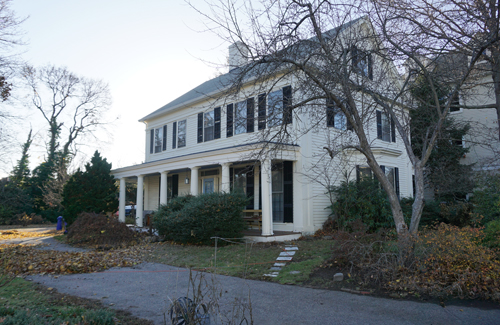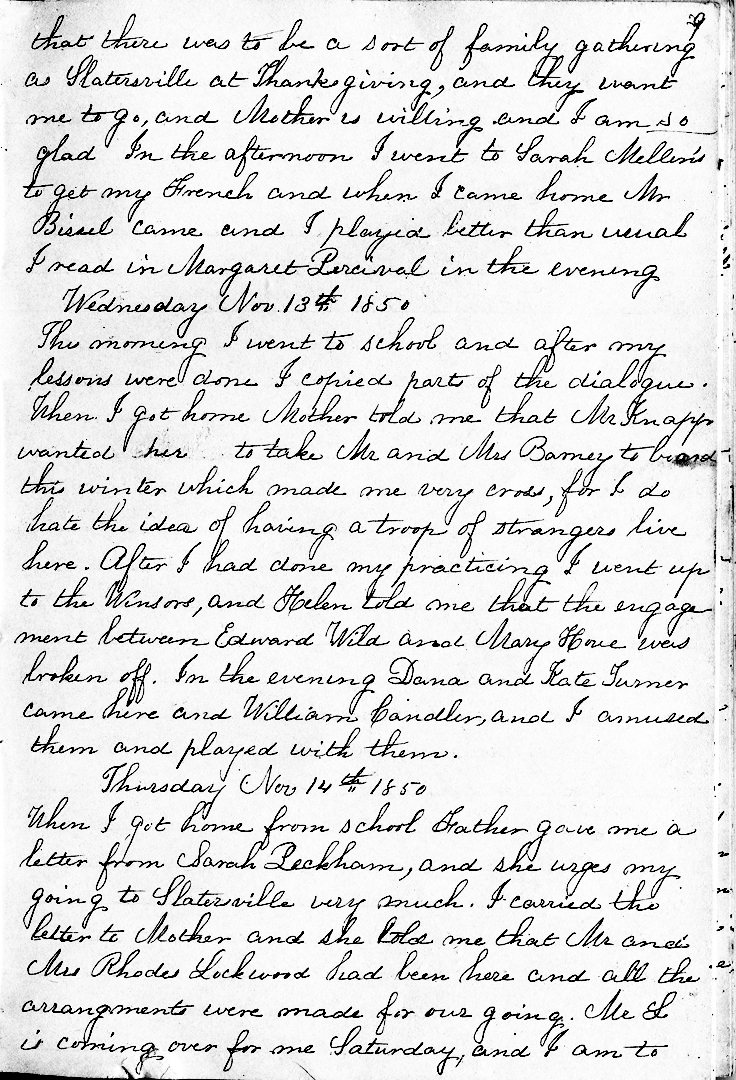
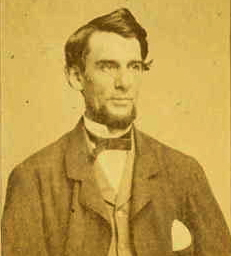
The Barney family comprises George Coffin Barney (1809-1893), his wife, and his two daughters. This is our first introduction to this enigmatic family that would soon board with the Faxons. Throughout his life George Barney seemed to change living locales, at an unusually frequent pace for the times, spreading them among far-flung places in the United States. Attached to this photo from the Nantucket Historical Association is the cryptic note: "after NY family trouble went to Detroit". A newspaper article from Alabama in 1841 shows their property in Mobile, Alabama, where daughter Eveline was born, as being sold in a sheriff's sale under court decree.
There was no obvious reason for them to be in Brookline. Adeline's words seem to indicate that Frederick Knapp, Brookline pastor, was the liaison and that the Faxons probably did not know the Barneys. Data are not clear but there is an indication that they may have had a son, Clarence Pell Barney (1841-1850), who had just died in June 1850, in St. Louis. The Barneys later lived on Harvard St. until 1855 (he is listed as "gentleman" in the census) before decamping to New Jersey.
Helen Winsor (1834-1922) was the first child of Alfred Winsor and Ann Maria Bird. The family lived at 247 Walnut St. in a house that still stands. In 1857, she married Edward Southwick Philbrick who grew up nearby at 182 Walnut St. When his father died two years later, the couple moved into his childhood home, a Brookline landmark that still stands. Helen Winsor led a long and impressive life. She was deeply involved in the abolitionist work for which the Philbricks were noted and much has been written about her and the Philbricks.
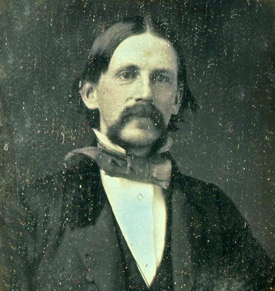
Edward Augustus Wild (1825-1891) was a physician who started practice in Brookline with his physician father, Charles Wild. He was an abolitionist, a Brigadier-General in the Civil War who lost his left arm in the battle of South Mountain and who later commanded an African-American regiment, and a swashbuckling figure who engaged in various foreign escapades. For a more extensive account of his exploits see Footnore #7, BROOKLINE IN THE CIVIL WAR
Mary Heath Howe (1830-1902) lived farther out on Warren St. near the reservoir. Edward Wild and Mary Howe were the "It" couple of the day. He had just returned from various adventures in Europe when the engagement was broken off and it was the talk of the town.
The Turners were close neighbors living at 19 Linden St. in a house that still stands. Catherine ("Kate") Winthrop Turner (1842-1851) was 8 years old here and died of dysentery less than a year later. "Dana" is most likely Kate's 10-year old brother, Nathaniel Dana Turner (1840-1893).
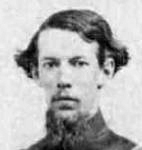
William Latham Candler (1839-1892), aged 11 in this diary entry, had just moved with his brother and widowed mother to the house at 447 Washington Street, just south of Park St., still standing and known as the "Candler Cottage". This boy of eleven would soon enough be fighting in the Civil War. In 1861, he put together a Company from Brookline and entered as a First Lieutenant. He held several major positions during the war and fought at the Battle of Antietam. This 1896 publication by the Brookline Historical Publication Society, forerunner of the Historical Society, describes the formation of the Second Regiment with the Candler brothers and Edward Wild who lived around the corner at today's 47 Weybridge Road:
In May the three officers received their commissions, Wild that of captain, and Candler and Chandler those of first and second lieutenants respectively, in the company they had raised.
Wild's command was mustered into the United States service May 25th at the old Franklin School House, Boston, by Colonel Harrington of Brookline, as Company A of the First Regiment Infantry, Massachusetts Volunteers.
The company was raised and equipped entirely by the town of Brook line. The Military Committee gave the three commissioned officers each a camp-chest and one hundred and twenty-five dollars, the privates five dollars for the purchase of equipments. The ladies of the town, with funds raised for the purpose, fitted out the men with necessary shirts, stockings, etc.
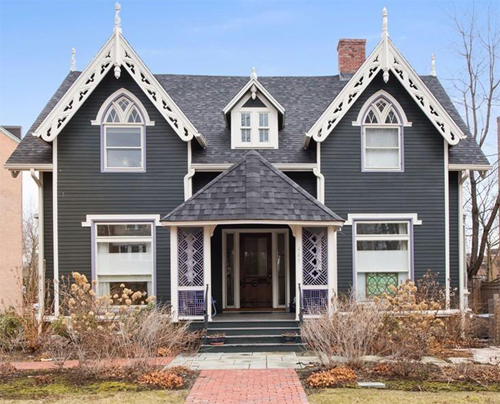
courtesy, raveis.com
